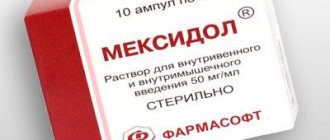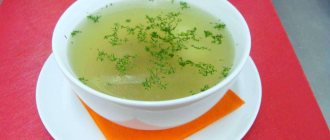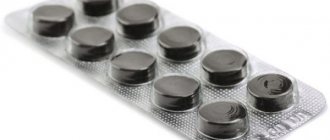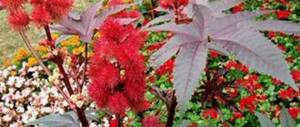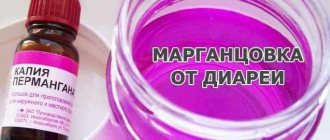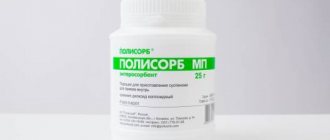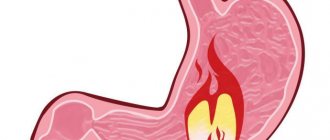“Everything is medicine and everything is poison – it’s all a matter of dose”
This phrase is attributed to the Greek philosopher and physician Hippocrates. Paracelsus, who lived almost two thousand years later, has a very similar formulation: “Everything is poison, nothing is devoid of poisonousness, only one dose makes poison invisible.”
In the middle of the 20th century (in 1943 by Zontman and Ehrlich), this principle was firmly rooted in science under the name “hormesis” (literally translated from Greek as “rapid movement, striving”). In medicine, it means the effect of stimulating the body (or its system) with small doses of a substance that, in normal doses, causes damage (poisoning).
There are facts in history when the greats of this world accustomed themselves to poisons (using them in very small doses) in order to protect themselves from possible poisoning (and they succeeded!). In the 19th–20th centuries, the fact of the stimulating and protective effect of small concentrations of toxic substances on multicellular and unicellular organisms received repeated scientific confirmation.
Scientific facts in favor of the statement: “Poisons in ultra-small doses work as an antidote”
- In therapeutic doses, the antibiotic penicillin kills bacteria. In small ones, it leads to the formation of a protective enzyme, which subsequently protects them from death under the influence of high doses.
- Ultra-small doses of the liver poison furfural stimulate the production of protective enzymes in the liver, protecting it from damage by large doses of the toxin.
- Injecting animals with very low concentrations of snake venom blocked the damaging (deadly) effect of its high doses.
- Toxic substances such as bromine, mercuric chloride, and arsenic acid in high concentrations kill yeast cells, and in small concentrations they stimulate their growth.
- Even the effect of such a destructive factor as radiation can be beneficial, provided that the radiation doses are low. At a dose close to the Earth's natural background radiation, radiation stimulates the defense mechanisms of cells (and the entire body), making them more resistant to high doses of radiation.
The same patterns (reversal of effect) are observed for drugs. For example, caffeine in very large doses causes inhibition of nerve cells; in therapeutic applications it has a stimulating effect; in small and ultra-small ones - sedative (the homeopathic preparation of coffee is prescribed as a sleeping pill and sedative).
The drug atropine (usually prescribed to relieve spasm - relax the smooth muscles of various organs) in therapeutic doses causes dryness of the mucous membranes, in very small doses it increases their secretory activity.
Symptoms of poisoning.
It is extremely difficult to determine poison by symptoms alone. Peritonitis and acute indigestion are similar to poisoning with acids and metal compounds; apoplexy, epilepsy and cerebral hemorrhage - due to drug poisoning; symptoms of a concussion - intoxication. Sleeping pills and alkaloids often cause dilation or, conversely, constriction of the pupils. By the smell of exhaled air, you can determine poisoning with ammonia, acetic acid and cyanide (the smell of bitter almonds). Blueness of the skin (cyanosis), which appears during shallow breathing, indicates corrosive poisons, lead compounds or toxic foods. Damage to the oral cavity and stomach tissue, accompanied by vomiting of blood and mucus, is caused by poisoning with strong acids and alkalis. Dizziness, vomiting and diarrhea suggest exposure to gastrointestinal irritants, food poisoning or metal compounds such as lead, arsenic and copper. Aconite, arsenic and lead cause paralysis.
Nikolai Pavlovich Kravkov
In Russia, unexpected effects of small and ultra-small doses of poisons and drugs were discovered at the beginning of the 20th century by the founder of Russian pharmacology, Nikolai Pavlovich Kravkov (1865–1924).
- He proved that isolated vessels of animals and humans react to ultra-low doses (up to 10-32) of chemical compounds (medicines, poisons, salts of heavy metals, etc.). Kravkov himself compared such concentrations with the dilution of one gram of the substance in the waters of Lake Ladoga.
- For some substances, I discovered a “three-phase effect”: in large doses the effect is obvious, as it is diluted it gradually disappears, with further dilution it reappears and increases, reaching a maximum at a very high dilution (but the direction of action may become the opposite, see point 3).
- He discovered that the same substances in different doses can cause diametrically opposed effects. For example:
- drugs that dilate blood vessels in therapeutic doses, in minimal doses, cause them to narrow and vice versa;
- arsenic acid (very toxic to cells in normal concentrations) in large dilutions (10-6) slowed down the rate of cell division, but as soon as it was diluted another 10 times, it began to act as a division stimulator.
Nikolai Pavlovich Kravkov had nothing to do with homeopathy, but his experiments also served to strengthen the evidence base for the therapeutic effects of homeopathic drugs.
In this article we touched upon only a small fraction of the discoveries of this amazing scientist and person. A truly holistic, versatile person; a brilliant theorist and inventive practitioner who left a mark (47 fundamental works) in almost all areas of the natural sciences - physics, chemistry, biology, pharmacology, anatomy, physiology, pathology, etc.
After graduating from the Faculty of Physics and Mathematics of St. Petersburg University and receiving a Candidate of Science degree at the age of twenty-three, he became interested in physiology and entered the Military Medical Academy and at the age of 29 became a Doctor of Science. After completing a two-year internship in the best European laboratories, he returns to Russia. And here, in these very difficult years, he works, laying the foundations for many theoretical and practical areas of Russian science, raising students who will continue his work. Let's list some of them:
- The textbook “Fundamentals of Pharmacology,” written on the basis of the lectures he gave, became the basis for the training of several generations of Russian pharmacologists and went through 14 editions.
- He developed a method for isolating substances from bacteria - the basis for the preparation of modern vaccines.
- He discovered the mechanism of action of drugs already used at that time (morphine, caffeine, adrenaline, atropine) on gas exchange.
- He improved the method of obtaining isolated animal organs - models for studying the effects of drugs. He was the first in the world to use isolated human organs (fingers, spleen, kidneys, heart).
- He created (and experimentally verified its non-toxicity) pedonal non-inhalation anesthesia (an alternative to chloroform, which was common at that time).
- For the first time he proposed “pathological models” (organs affected by disease) for studying the effects of drugs. Fairly believing that the effect of substances on healthy and diseased tissues may differ.
- Isolated from the pancreas, studied the properties and successfully used in the treatment of diabetes mellitus a substance called “pancreatoxin” by Kravkov (its properties are insulin; but at that time in Russia they did not yet know about the successful production of insulin from the pancreas by Canadian scientists).
And many, many others.
PS
Reflecting on the question posed in the article about the nature of the relationship between the force of influence and the response received, I remembered the sayings of the Chinese sage Lao Tzu, who lived two and a half thousand years ago...
Man is born flexible and weak; And he dies hard and numb. Everything on Earth, including grass and trees, Wet and soft in life, But dry and brittle when they die. Cruelty is the companion of death, Flexibility is the companion of life. An army that is incapable of flexibility is incapable of defending. A tree that cannot bend will break when the wind blows. The hard and tough will be destroyed, While the soft and flexible will remain.
There is nothing in the world softer and weaker than water. And nothing compares to it in terms of its effect on solids. There is nothing like her. The weak overcomes the strong; Soft - hard. There is no one in the whole world who does not know this, But no one can master it. Truth is like error.
Make an appointment
Household toxic substances.
Many toxic chemicals are common in everyday life and can cause poisoning. Let's list the main ones.
Also on topic:
ALKALOIDS
Antifreeze: ethylene glycol, methyl alcohol.
Herbicides: 2,4-D, ammonium sulfamate, arsenic compounds, atrazine, paraquat.
Also on topic:
ARSENIC AND HUMAN HEALTH
Disinfectants: formaldehyde solutions, hypochlorites, ammonium salts, phenols.
Insecticides: DDT, chlordane, lindane, parathion, nicotine, sodium fluoride, thallium compounds, dursban, pyrethrin.
Paints: lead compounds, dyes, pigments, oils, solvents.
Rat poisons: naphthylthiocarbamide, warfarin, zinc phosphide, arsenic, lead and thallium compounds, phosphorus (yellow or white), strychnine.
Psychotropic drugs: barbiturates, antidepressants.
Mineral food supplements: iron supplements in tablets.
Painkillers: opium derivatives, chloroform.
Paint thinners: turpentine, gasoline, white spirit.
Repellents: para-dichlorobenzene, naphthalene, camphor, cedar resin, dimethyl phthalate.
Laxatives: magnesium sulfate, sodium sulfate (Glauber's salt), phenolphthalein (purgen).
Extinguishing agents: carbon tetrachloride, methyl bromide.
Rubbing agents: alcohols, capsin and other ointments containing methyl salicylate, menthol, mustard oil.
Hair care products: alcohols, barium sulfide, thioglycolates, bromates, persulfates, perborates.
Paint removers: alcohols, methylene chloride, acetone, benzene, methyl ethyl ketone, lye (sodium hydroxide).
Fumigants (fumigants): cyanide, carbon disulfide, carbon tetrachloride, chloropicrin, methyl bromide, ethylene oxide, para-dichlorobenzene.
Fungicides: Bordeaux mixture (a mixture of copper sulfate and slaked lime), chlorophenols (including pentachlorophenol), dithiocarbamates, orthocide, creosote.
Cleaning agents: ammonia, lye (sodium hydroxide), sodium phosphate and polyphosphates, borax, boric acid and borates, washing soda (sodium carbonate), oxalic acid, hydrochloric acid, carbon tetrachloride, benzene, gasoline solvent, white spirit, bleach type sodium hypochlorite.
Other toxic substances found in everyday life. Among them: alkaloids (monkshood, apomorphine, morphine, nicotine, strychnine); amyl acetate; aniline; arnica; arsine; aspirin and other salicylates; acetaldehyde; acetylene and its compounds; belladonna; benzene; beryllium and its compounds; bromine; ethyl bromide; vinyl chloride; hydroquinone; dimethyl sulfate; dinitrophenol; dioxane; dichloromethyl ether; smoke and gases generated during a fire; iodine; iodoform; sewer gas; acids (nitric, glacial acetic, hydrofluoric, sulfuric, phosphoric); croton oil; xylene; curare; methyl formate; nickel dust; nitrates and nitrites; nitrobenzene; nitroglycerine; ozone; calcium oxide; nitrogen oxides; hydrogen peroxide; picric acid; pyridine; pyrocatechin; radioactive substances; resorcinol; mercury and its salts; sulphur dioxide; hydrogen sulfide; carbon disulfide; barium compounds; vanadium compounds; bismuth compounds; cadmium compounds; selenium compounds; antimony compounds; tellurium compounds; zinc compounds; potassium salts; tin salts; silver salts; sulfa drugs; tetralin; tetrachlorethylene; toluidinetrichlorethylene; toluene; tricresyl phosphate; carbon dioxide; phenylenediamine; formaldehyde; phosgene; phosphine; chlorine; chloral hydrate; methyl chloride; ethyl chloride; ethyl acetate; ether.
Poisonous plants in Russia
On the territory of vast Russia there are many plants that can be considered poisonous. Strictly speaking, poison can be obtained from any herb, the only question is its concentration and degree of impact. Here are just a few plants that can be considered both medicinal and poisonous:
- digitalis;
- wolf's bast;
- St. John's wort;
- celandine;
- henbane;
- fly agaric.
These are just the most famous ones. And also:
- belladonna (belladonna);
- aconite;
- hemlock;
- hogweed;
- elder;
- raven eye;
- dope;
- buttercup;
- acacia;
- lily of the valley;
- fern;
- hellebore;
- comfrey larkspur.
And there are many, many other plants that are poisonous and not very used in folk medicine and pharmaceuticals.
